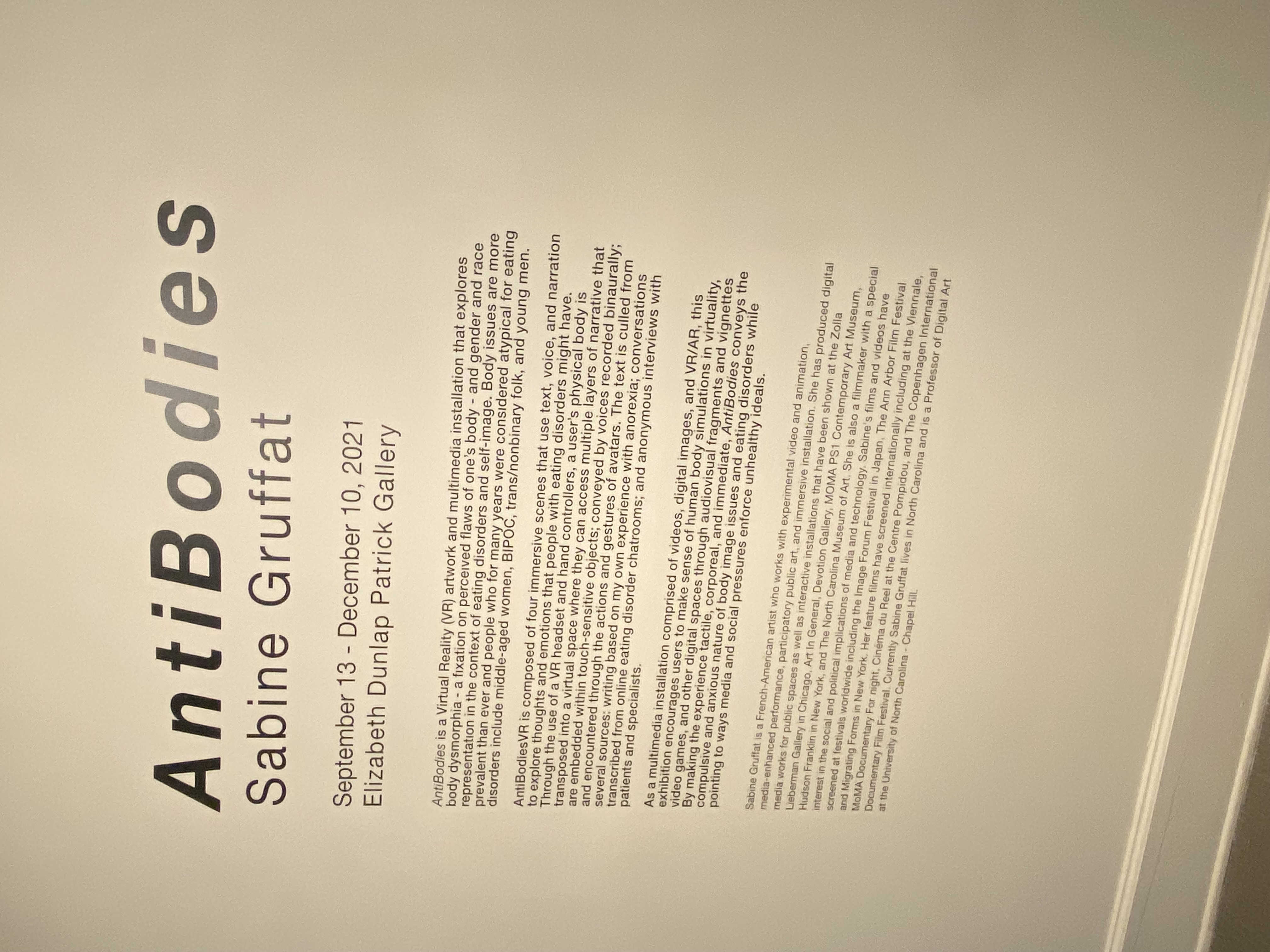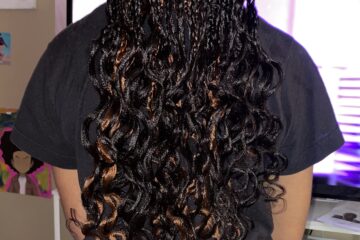Winthrop always strongly advocates and encourages their Fine Arts program by continuously providing opportunities for students interested in pursuing or students who just enjoy engaging in creative art.
On Sept. 13, two professional galleries were unveiled at Winthrop University. One of them was entitled “AntiBodies” by Sabine Gruffat. These galleries will be up for display for everyone on campus to view until Dec. 10, so there is plenty of time to take advantage of this opportunity and see the art available for free on campus.
Sabine Gruffat is a French-American artist who is currently living in North Carolina and working as a professor of digital art at the University of North Carolina at Chapel Hill. She is one of the two professional artists displaying artwork here at Winthrop’s gallery in the Rutledge Building.
Gruffat’s art includes using virtual reality and multimedia installations to convey the theme of her art and reach her audience.
Upon entering Gruffat’s exhibit, one of the first things displayed on the walls is a short introduction to the meaning behind her artwork and information on the artist herself.
The introduction reads, “‘AntiBodies’ is a Virtual Reality (VR) artwork and multimedia installation that explores body dysmorphia – a fixation on perceived flaws of one’s body – and gender and race representation in the context of eating disorders and self-image.”
The director of Winthrop University Galleries, Karen Howard, coordinates these exhibits, including Gruffat’s.
“We have three different spaces of the Winthrop University Gallery, one student gallery and two professional galleries. So we do exhibitions of different people,” Howard said. “Up in the Patrick Gallery is the ‘AntiBodies’ exhibition. This is an exhibition of artist work and a part of the artwork that the artist [Gruffat] has created using VR.”
Howard explained how Gruffat’s art tackles pressing issues about how people view their bodies.
“She’s exploring body issues and the views in our society of eating disorders and body dysmorphia,” Howard said. “Part of that is her own personal experience, and the other part of it is that she works in many different kinds of media and film. She has started to use newer technologies including gaming and virtual reality.”
Howard explained how Gruffat noticed the physicality of gaming avatars was not a true representation of diverse body types.
“She realized that a lot of the stock kinds of sounds and body forms and all those kinds of things to build games. She found that they were highly masculine or an objectified version of a woman, like with big breasts, etc.,” she said. “She was coming across this idea that even if she was trying to represent this ideal of a female in a virtual world, there wasn’t one in the library of options that had the abrupt or the interest of female sounds, etc.”
One of the pieces set up in the exhibit shows a virtual image of two girls making the same sounds on a loop.
“Ms. Gruffat created different avatars in one of her pieces that show the different kinds of movements and sounds that can come from an avatar that are in those stock bodies,” Howard said. “You can say they’re not terribly feminine; they might not be representative of everyone in a sense. Even though everyone is playing these games, they don’t necessarily represent everybody.”
Gruffat had also created a virtual reality game, available for attendees to experiment on.
“This game is centered around your ‘goal weight,’” Howard said. “So these projected images on the wall are some that you will see when you play the game. When you’re in the VR headset, you can play the game. The images on the wall are there so that when someone is playing the game, the people on the outside can get a sense of the imagery you’re looking at.”
“It all has to do with this idea of what the representation of bodies is in this virtual reality and making a statement for what that means for our society, how we view these topics.”
When someone enters the virtual game, there is an instructor helping to navigate you through the game. As one plays, they can interact with different avatars and walk around as if they are there.
The art pushes forward to evaluate hard pressing matters that should be discussed and provide a creative outlet for not only the artist but the viewers as well.
“We use creative work to have these larger conversations about body dysmorphia. Any student at Winthrop University could have similar issues with this that they could relate to,” Howard said. “It’s just that we are using creativity as a jumping–off point to have these discussions. We use these spaces to do that throughout the year.”




